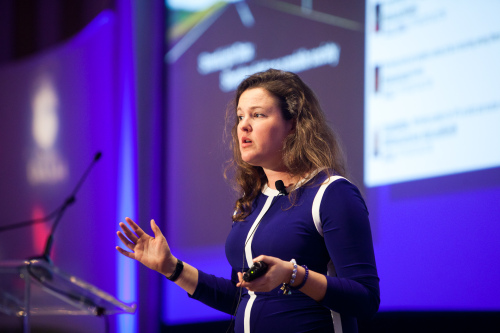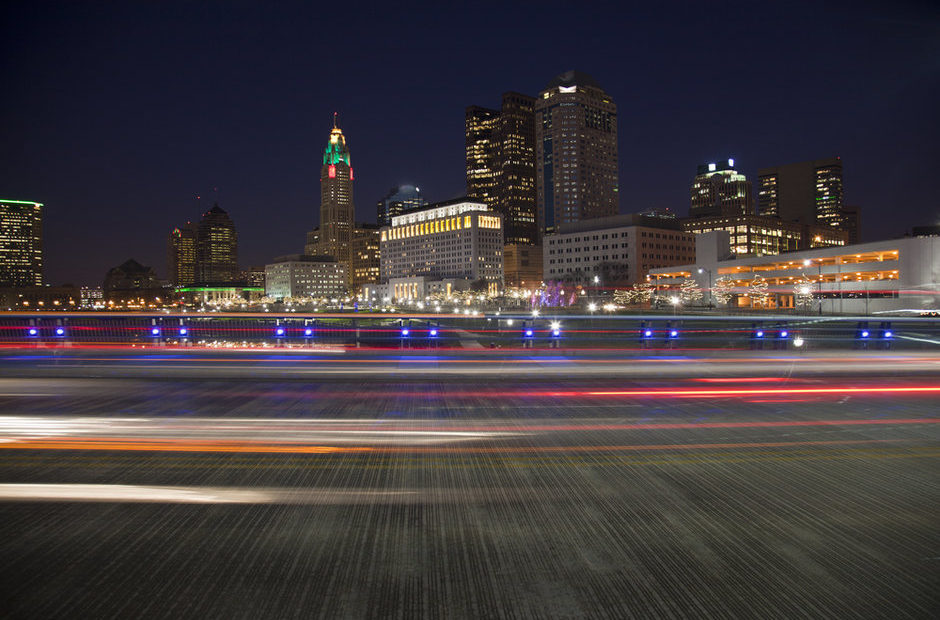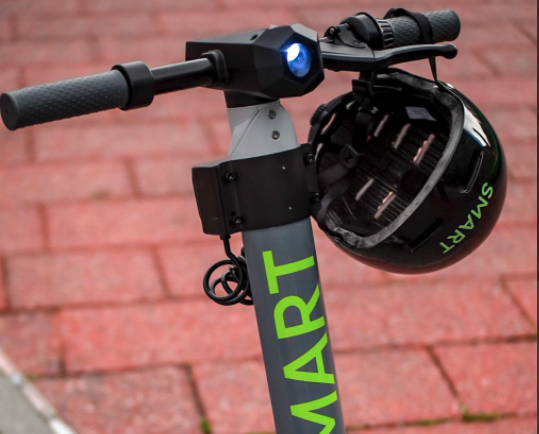StreetLight Data CEO Laura Schewel discusses the role of Big Data in transport planning.
What have the challenges been in your career?
“When I started StreetLight Data, I had to find enough money to really get going. This meant finding investors. I had to go pitch our company to investors, and I pitched literally hundreds of them. Before StreetLight Data, I’d never worked for a for-profit company (much less started one). So for me a lot of the challenges were the basics – how to write a budget, understanding acronyms like CAC and EBITDA. I was overwhelmed with what I felt I didn’t know.
“However, I eventually decided that most people also didn’t really have deep training on a lot of what they were doing. I learned a little Googling and Wikipedia, combined with a confident tone of voice and willingness to ask questions, can go a long way. I decided that doing something for the first
time is no reason not to do it!
“Later on, the main challenge was building the right team. At first, I valued resume experience and affiliation with successful big names very highly. And I had a few misfires building our team. Later I learned that passion and willingness to work hard and collaboratively are far more important than a glittery resume.
“Now that we’ve been up and running, and have hundreds of clients, our challenges are different. One of our main challenges is to educate transportation practitioners on the importance and viability of adopting our transformative approach to data – and make them comfortable and confident doing it.
“We’re upsetting the status quo, and lots of people are comfortable with the status quo. Transportation is in the midst of a deep transformation – from climate causing emissions to EVs to autonomy to ride shares and carless lifestyles. Without data, our communities can’t adapt. And that requires practitioners to change their day to day work habits.
“Another challenge we had early on is that our data was initially derived from cellular towers. It’s spatial accuracy was usually around 100m-1000m.
“For many transportation use cases, this meant you had to make too many assumptions to use it. For example: most roads are within 100 meters of another major road so with accuracy this poor we could never be sure which route people were taking. Also many walking trips are under 1000m so we could never be sure if a short trip was real, or just a fluctuation in the data collection accuracy. Thus, we couldn’t really measure walking trips.
“We solved this problem by leading our industry in adopting a very new type of data, called Location Based Service data, which is a compilation of data collected from Smart Phone apps.
“We work with 300 apps via our partner Cuebiq and collect data from over 70 million phones from a variety of sensors within the phone – GPS, aGPS, WiFi, Blutooth, etc. The accuracy is 5-25 meters spatial precision.
“We took a leap on a very new source of data that is more complex because it comes from a wider array of sources. But it has paid off in spades – all our Metrics are far more accurate and we can be used in many more applications.
“Another big challenge is procurement. I know it sounds trivial – but we’re using Big Data via SaaS to replace and drastically improve a function that usually was done by consultants and procured as a professional service. Many government dollars that can and should be used for software like us are currently constrained to professional services, or procurement offices have very rigid rules for procuring software. Working to help our clients’ procurement processes modernize is slow, hard, and worth it!”

How did you/the organisation adapt?
“For the first few years we were in business, we relied on a broad network of partners in the consulting and engineering industry to be our “primes” when dealing with government agencies. The agencies would procure these firms’ services, and then they would procure our software as a line item in the contract. This allowed us access to the government markets without the high cost of selling directly. Now that we’re more mature, we both sell in conjunction with our consulting partners and sell directly to agencies.
“For the education and adoption piece – we’ve developed what I call a “Two Phase” value proposition. Phase 1 – StreetLight InSight can replace and improve on old fashioned data collection techniques like surveys and sensors. Our product, our billing, our software output, and our sales process are all designed to slot right into this “replacement” role. This makes it a more straightforward sale: “It’s just like what you have already – except more data, richer context, and less money.” We only have to educate about the source of the data.
“That’s all good, but the transformation it enables is limited. Once a client is comfortable with this “Phase 1” value proposition, we start talking about “Phase 2.” The availability of Big Data, and having the ability to run new expansive analytics in minutes from your desktop computer – doesn’t just replace.
It can transform your practice. Our work in Northern Virginia with VDOT is a great example of this.
“Virginia Department of Transportation had limited funds to invest in new Travel Demand Management programs (bike lanes, bus and van pools, etc.) in Northern Virginia, which faces some of the worst congestion in the US. In the old way of doing things, VDOT would have picked a few corridors based on local knowledge and advocacy, surveyed people who live and work near those corridors, and then used that data to develop a model of the costs and benefits that would accrue from a new program. Then they would have invested in a few of those programs. This allows exploration of only a few corridors. Plus, the survey results are very limited.
“As a Phase 1 Value proposition, VDOT used StreetLight to scan far higher sample sizes for all users of target corridors, not just those who live and work near the corridor. This was faster (it took a few days), saving lots of time, and more accurate as many Northern VA/DC drivers travel long distances.
“But the Phase 2 Value proposition was even bigger. Because of the low cost of Big Data analytics, VDOT could scan every single mile of state road, and every single neighborhood in Northern Virginia to find certain characteristics. For example -which neighborhoods have the most car trips under 3 miles? These might be the best candidates for bike lanes or shuttle buses. Thus, VDOT was able to choose the very best locations for deep dive analysis – not limit themselves because of time and budget to a handful.”

What processes/technologies/ people did you use to overcome these challenges?
“We’ve also adapted to our clients’ demands for data by adding new types and sources of Big Data to our platform. For example, we’ve transitioned using from cellular tower data to Location-Based Services (LBS) data.
“This data source allows us to deliver more spatially precise travel information from a very large sample of devices.
“I also started listening to my own instincts more – after getting input from a variety of people I trust. At the beginning, I was more liable to be swayed by what a few investors (or potential investors) said.”
What lessons did you learn/ are you learning from this?
“I’ve learned that major changes take time. Our first step was showing people who like to adopt new things that we were viable. Then, once these early adopters were on board, we partnered with them to our broader audience so that they became comfortable with our approach. This meant doing a ton of pilot projects, working with universities and researchers, and conducting extensive validation work in partnership with our clients.
“Transportation practitioners are by nature cautious, and that’s a good thing: The investments we make often cost millions or billions of dollars, and they impact the communities we live in for decades. Getting our transportation infrastructure right is critical. It may have taken time for us to prove that our innovative approach is better than the status quo, but it was the right thing to do.
“I’ve also learned that innovating on data source, procurement model, software-based delivery, and statistical methods all at once can be either really beneficial, or create problems depending on the client. So sometimes we ask them adapt just part of their process (say, with new data and stats but the same procurement model).”
What advice can you give to someone in a similiar situation?
“My advice is to be patient. Breaking the mold in any industry is not easy. However, we’re now seeing the payoff from the groundwork our team has laid for the past few years. The transportation practitioners who thought Big Data was too new-fangled just last year are changing their minds today. We’ve made tremendous progress by simply educating the market, identifying and supporting our evangelists, and helping our clients tell the story of their success to their peers.
“The other advice is to find some friendly advisors who are also buyers. Get them to take you through the nitty-gritty of the process step by step.”
What does the future hold?
“We are on the cusp of a truly data-driven, performance-based approach to transportation planning. I think we are going to see more and more public agencies leverage new technology to measure travel behavior very soon.”

StreetLight Data CEO, Laura Schewel.













